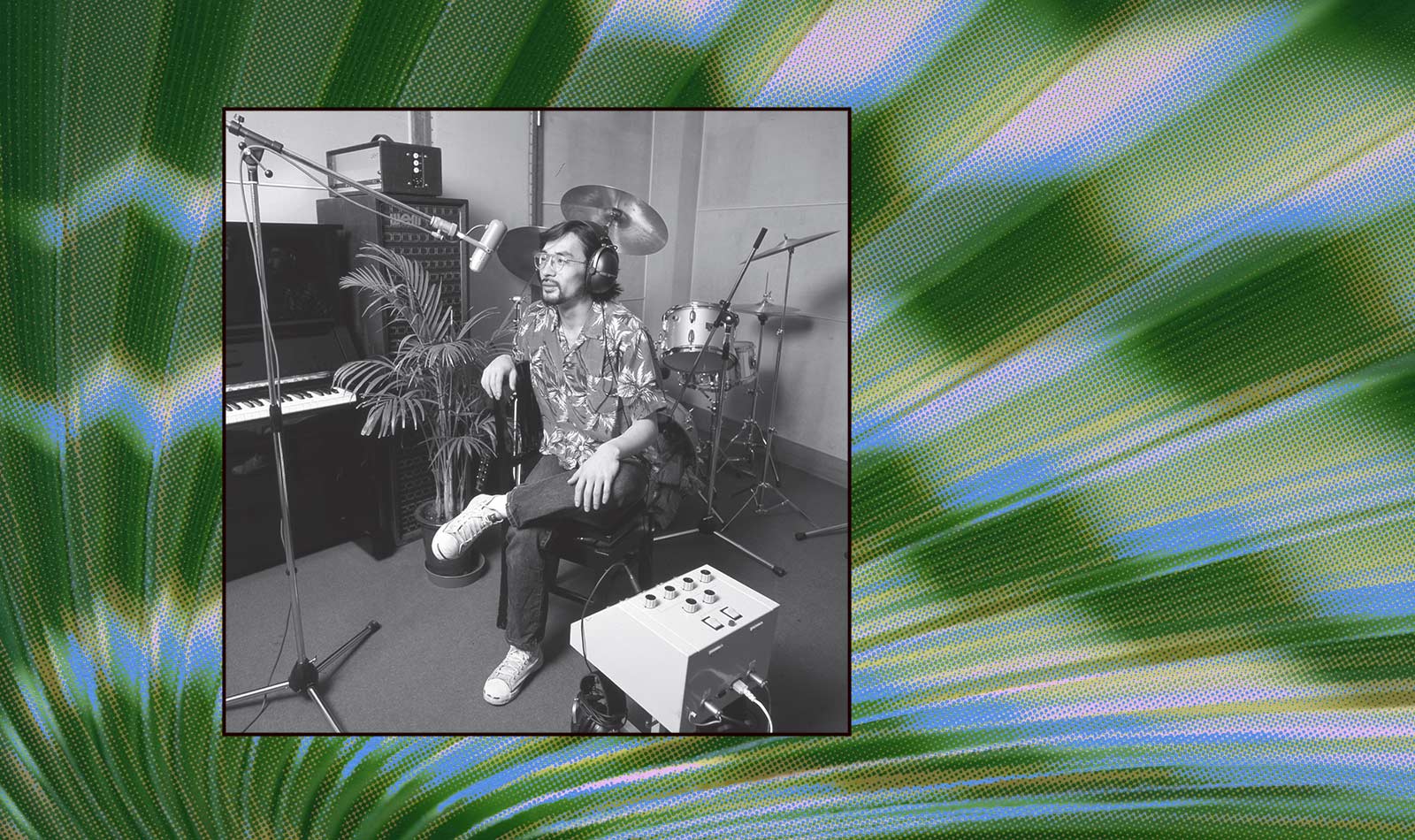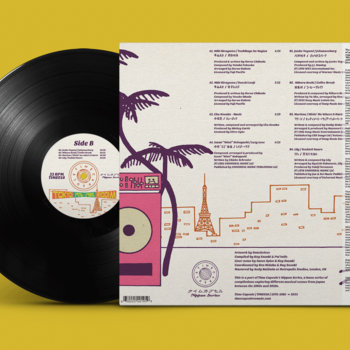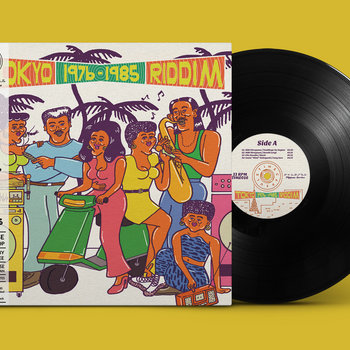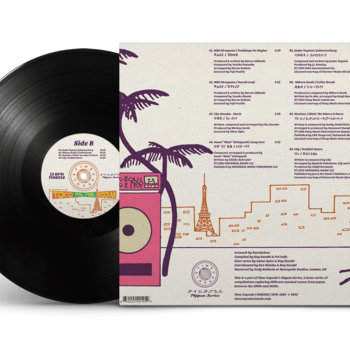
The music of Jamaica has long been embraced by Japan. Since early tours of the country in the 1970s by various Trojan Records acts and eventually a much-anticipated series of shows by Bob Marley, reggae has been a constant in regards to lifestyle, fashion, and domestic sounds. An entire “J-reggae” scene continues to thrive, while J-pop frequently draws inspiration from the style.








Vinyl LP




“In the global reggae scenes, particularly from the ’90s, Japan is famous for collecting all the precious vintage 7-inch records from Jamaica, winning world sound clash competitions and even having the first foreign dancehall queen in 2006,” says Kay Suzuki, director of London-based record label Time Capsule. “We have true admirers of reggae music in all forms of its culture, but I don’t think there were many documented stories or musical compilations about how Japan started integrating their music with reggae in the ‘70s onwards.”
Suzuki and the Time Capsule team aim to rectify this gap with Tokyo Riddim 1976–1985. The compilation captures how reggae rhythms and ideas were appearing in Japanese music during this period, and avoids trying to establish any single timeline in favor of showing the many different ways the Japanese embraced reggae throughout the decade, ranging from pop interpretations by the likes of artists such as Miki Hirayama to more politically charged takes courtesy of Junko Yagami.
Suzuki says the impetus for creating the compilation came from digging through en vogue city pop records and realizing how “there are so many reggae tunes hidden deep in album tracks, and I wanted to investigate how they acquired those riddims.”
“We wanted to capture the mindsets of Japanese musicians who were commissioned by commercial entities such as record labels, publishers, and management companies to create a variety of pop music during this pre-bubble economy era in Japan,” Suzuki says. “The economy was already booming by this point and those studio musicians and producers had the ability and finance to study and reproduce what they were influenced by at that time, and reggae was just a part of its musical palettes in the pop music world.”
To that end, there’s no neat starting point for when reggae began influencing Japanese musicians present on Tokyo Riddim. Celebrated ‘70s “new music” artist Chu Kosaka and pop singer Saeko Kamata (better known as Lily) began playing around with reggae influence well before any notable tours by Jamaican acts, inspired by shows on U.S. military bases and the general circulation of foreign music amongst the nation’s musical circles. The songs from Kosaka and Lily are the sound of Japanese reggae in its earliest form.
When Jamaican artists did begin touring Japan, though, it launched an even bigger interest in reggae. “Bob Marley…definitely Bob Marley,” artist Izumi “Mimi” Kobayashi says about her first exposure to reggae music. While she built a career for herself largely around writing for other artists and for composing songs for anime—most notably the theme for beloved series Urusei Yatsura—she also released solo albums, none of which were commercial successes but reflected the money-rich times of early ‘80s Japan, says Kobayashi.
“I was kind of treated by the record company in a special way,” she says, laughing. “They can’t control me because I know exactly what I wanted. I was kind of scary. They told me, ‘You can do whatever you want.’ They didn’t care, because they had plenty of big million-sellers. They had to spend against tax anyway.”






Vinyl LP




Taking advantage of her role as a tax write-off, Kobayashi requested that she be allowed to record her 1981 solo album Coconuts High in Los Angeles, which the record company agreed to. “So I went there for one month, and I just went out to nightclubs, and I found a really nice band called Babylon Warriors,” she remembers, referring to a reggae-inspired act performing around L.A. at the time. She wanted to record with them, so Kobayashi just went backstage—literally, opening a door and walking to the back of a venue without permission—and asked them to work with her.
The resulting song, “Lazy Love,” a reggae-fied version of her own synth-pop number “Crazy Love,” appears on Tokyo Riddim, offering a snapshot of how Jamaican sounds intersected with bubble-era Japanese pop, powered by artist’s desire to try new things and label’s seemingly infinite wallets. Suzuki says that save for some exceptions—Yagami’s anti-apartheid number “Johannesburg” being the clearest example, connecting reggae to political campaigns half a world away—most Japanese artists of this period weren’t focused on the activist bent, but rather using reggae palettes as a way to offer depth to their albums.
“I don’t think many Japanese people at that time associated reggae as rebel music. When I interviewed one of the musicians in this compilation, he said when they heard reggae music from Jamaica in the ’70s, their groove felt so alien to them they thought they’d never be able to play like Jamaicans so I guess they weren’t able to express their message through this format to begin with,” Suzuki says. To that end, Tokyo Riddim underlines how non-Jamaican acts like UB40 and The Police also played a role in the country’s embrace of the genre, showing them a more pop-forward way to incorporate these new sounds.
However it was interpreted, Time Capsule’s compilation offers an overview of a decade where reggae was embraced by Japanese artists, revealing new perspectives on the Caribbean genre that remain relevant today. It wouldn’t be a one-way street either: In the middle of the 10-year span covered by Tokyo Riddim, Casio employee Hiroko Okuda would create the “Sleng Teng” riddim preset on the Casiotone MT-40 keyboard, which would go on to inspire a generation of Jamaican artists. Tokyo Riddim captures the earliest infatuation with this sound, offering hints of where it would go en route to becoming an essential part of modern Japan’s music scene.







